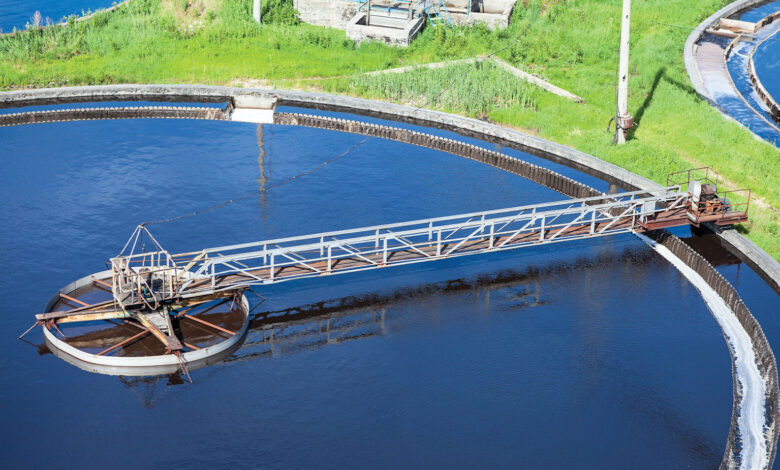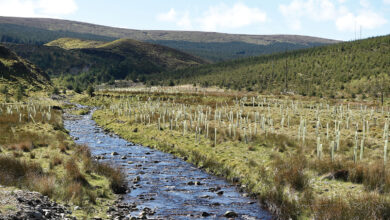The Executive’s action on infrastructure

Prior to his election to the Seanad, one of Conor Murphy’s final acts as Minister for the Economy was the opening of a consultation on electricity connection reform. This was followed by the new Infrastructure Minister Liz Kimmins MLA announcing her Department’s ambitions for wastewater infrastructure.
On 11 February 2025, the new Minister for Infrastructure, Liz Kimmins MLA, announced her plans to tackle wastewater infrastructure.
This move followed her predecessor, John O’Dowd MLA, introducing a consultation for the Living with Water in Derry Plan. This was a follow-up from a similar measure introduced in Belfast.
Kimmins announced a total of around £500 million for the sector, including an immediate injection of £19.5 million to NI Water, aimed at unlocking capacity for 2,300 new homes. A 2021 report by the Northern Ireland Audit Office (NIAO) states that there will need to be investment of at least £2 billion over the next decade to bring wastewater infrastructure “up to a sustainable standard”.
Past legislative commitments in wastewater infrastructure and broader environmental infrastructure areas have faced delays, with key policy initiatives often constrained by financial limitations or political uncertainty. The establishment of an Independent Environmental Protection Agency, proposed in 2020, remains incomplete.
Kimmins has also committed to introducing a Water, Flooding, and Sustainable Drainage Bill before the end of 2025. The proposed legislation aims to integrate nature-based solutions into wastewater management to enhance system resilience and reduce environmental impact. However, there is no clear timeline for delivery and the Department has not specified what the metrics for success will be.
The Programme for Government (PfG), released on 3 March 2025, makes no reference to the proposed Bill, with the PfG instead making vague references to “historic underinvestment in water and wastewater infrastructure” and also asserting that, if the Executive increases investment in wastewater infrastructure, “we will encourage businesses to invest, enable house building, and support greater energy efficiency and affordability”.
The Infrastructure Minister has highlighted the potential role of developer contributions in funding wastewater infrastructure improvements. This approach, common in other jurisdictions, would require property developers to contribute financially to system upgrades, offsetting some of the public investment burden.
Electricity connection reform
Prior to his election to Seanad Éireann, then-Minister for the Economy Conor Murphy launched a consultation on changes to how the costs associated with new connections to the electricity distribution network are recovered.
The consultation refers to the need for “socialisation” of electricity connection costs, and seeks to address barriers to the adoption of low-carbon technologies, particularly in rural areas where grid capacity constraints are most prominent. Under the existing model, the first customer requiring a grid upgrade must bear the cost, creating a ‘first mover disadvantage’. The proposed reforms would distribute these costs more broadly across all electricity consumers, aligning Northern Ireland with similar policies in Britain and the Republic of Ireland.
While this approach could encourage the uptake of renewable technologies and support the transition to a low-carbon economy, it also raises concerns regarding cost redistribution, given the current high electricity prices facing consumers.
In the PfG, the Executive states that a change to Electricity Grid Connection Charging policy “will be delivered”, aiming to “lower a barrier to connection for renewables and other low-carbon technologies such as electric vehicle charging; and, through the development of a Net Zero Accelerator Fund, we will make the region more attractive for net zero investment and also help cut greenhouse gas emissions in line with the Climate Change Act 2022”.
While this marks a step change towards the adoption of renewables and mirrors the PfG’s other commitments to increase renewable energy-generated electricity by 40 per cent by 2040, the question of cost and how this will be achieved has been left unremarked upon in the PfG.
Analysis
The two departments have emphasised the importance of interdepartmental collaboration in delivering infrastructure improvements. However, previous attempts at cross-departmental coordination have encountered significant challenges.
For example, the 2020 Living With Water Programme (LWWP) was designed as a strategic framework to address wastewater and flooding challenges through a multi-agency approach. Despite its potential, key projects identified under the programme remain unfunded or delayed due to political and budgetary constraints.
Similarly, ensuring alignment between energy policy and infrastructure planning is critical if Northern Ireland is to meet its renewable energy and climate targets. The lack of a coordinated strategy across government departments has, at times, hindered progress in this area. Strengthening governance structures and introducing clear accountability mechanisms will be essential to translating policy commitments into tangible outcomes.
While the recent policy announcements reflect a recognition of the pressing infrastructure challenges facing Northern Ireland, their effectiveness will ultimately depend on long-term strategic planning, sustained investment, and efficient implementation.
Short-term funding allocations, while beneficial, do not resolve the underlying challenges of systemic underinvestment and fragmented governance, and the Executive’s work over the remainder of its term to 2027 suggests that, aside from generic goals of ‘improving infrastructure’, there is no agreed vision being worked upon at Executive level.





